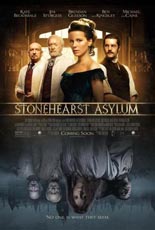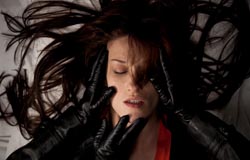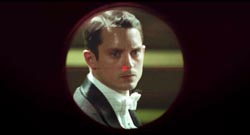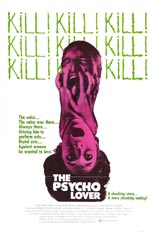
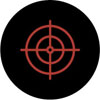 An alternate title for The Psycho Lover is The Loving Touch — one über-creepy appellation for a movie about a serial rapist whose on-the-job face is smashed underneath a heavy layer of pantyhose.
An alternate title for The Psycho Lover is The Loving Touch — one über-creepy appellation for a movie about a serial rapist whose on-the-job face is smashed underneath a heavy layer of pantyhose.
That felonious fellow is Marco (Frank Cuva, Game Show Models), who has trouble distinguishing his fantasies from reality. Meanwhile, motorboat enthusiast (in more ways than one) and psychiatrist Dr. Kenneth Alden (Lawrence Montaigne, The Great Escape) wishes his fantasies were reality, because he’d like to shack up with his mistress, but his cock-blockin’ crone of a wife (Jo Anne Meredith, J.D.’s Revenge) refuses to grant him a divorce. That chaps the hide and boot-shaped sideburns of Kenneth so bad that he brainwashes Marco into making Mrs. Alden his next victim.
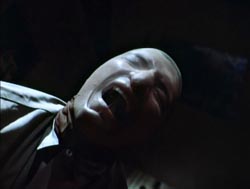 If that sounds at all icky, reserve judgment until you see the gangly homicide lieutenant (John Vincent, The Exotic Dreams of Casanova) who looks like Edgar Allan Poe discuss his police work: “You know, Doc, I’m like the proverbial bloodhound: I can smell him in this room and the hairs on my ass stand on end every time I catch his scent.”
If that sounds at all icky, reserve judgment until you see the gangly homicide lieutenant (John Vincent, The Exotic Dreams of Casanova) who looks like Edgar Allan Poe discuss his police work: “You know, Doc, I’m like the proverbial bloodhound: I can smell him in this room and the hairs on my ass stand on end every time I catch his scent.”
No matter the name it plays under, The Psycho Lover is a sexploitation thriller after my own heart. Written, directed and produced by Robert Vincent O’Neill (creator of the Angel franchise), the picture has more on its dirty mind than most programmers of the era and budgetary level. By combining Dial M for Murder with The Manchurian Candidate — not to mention Hanes’ L’eggs line — he ended up with a twisty, inventive, enjoyable slice of sleaze. —Rod Lott

